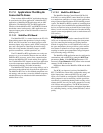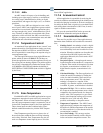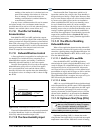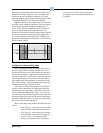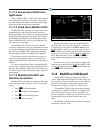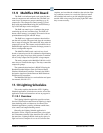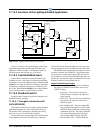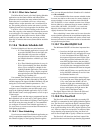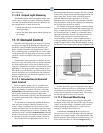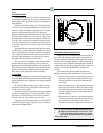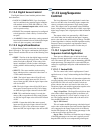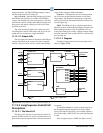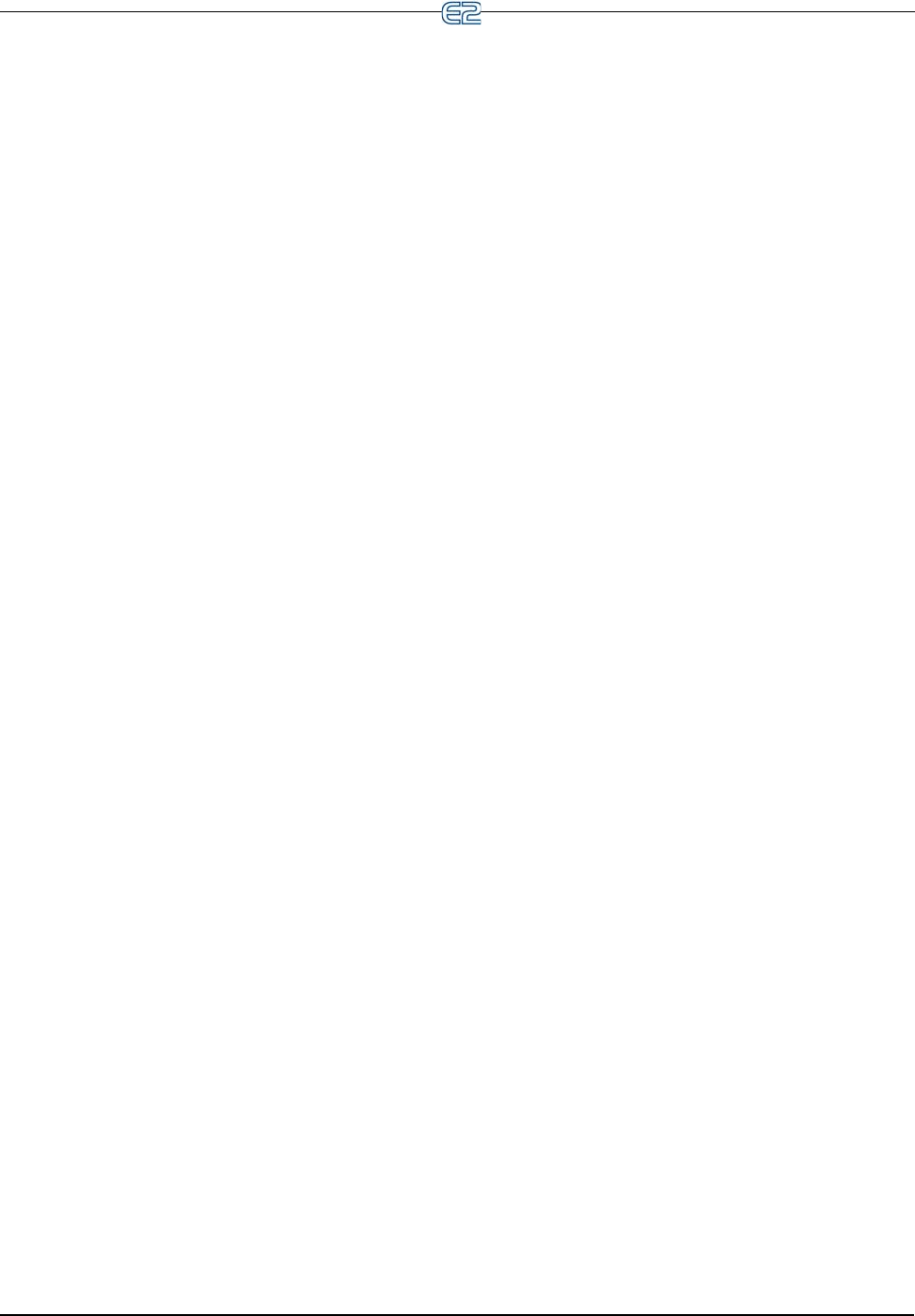
11-34 • E2 RX/BX/CX I&O Manual 026-1614 Rev 4 5-JAN-2013
11.10.5.2 Offset Solar Control
The Offset Solar Control cell of the Lighting Schedule
application uses the Sunrise Offset and Sunset Offset
parameters to determine how many minutes before or after
sunrise the sun is considered to be risen, or how many
minutes before or after sunset the sun is considered to be
set. The resulting offset for sunrise and sunset is used by
Lighting Control in its logical equations for the Solar state.
A positive value is entered if adding to the sunrise
time, and a negative value entered if offsetting the sunrise
to an earlier time. For example, if the user wanted to turn
the lights OFF one hour before sunrise, Sunrise Offset
would be set to -60, and if the user wanted to turn the
lights ON 45 minutes after sunset, Sunset Offset would be
set to 45.
11.10.6 The Basic Schedule Cell
The Basic Schedule cell has two main functions:
• If a Time Schedule application is set up in E2
to provide ON/OFF times for the lights, the
Basic Schedule cell passes the occupied/
unoccupied state from this time schedule to
the Schedule Interface or Multi-Logic Com
-
biner cell.
• If no Time Schedule application is set up in
E2 for light scheduling, the Basic Schedule
allows you to configure a schedule for the
Lighting Schedule application. This custom
schedule will pass along a digital occupied/
unoccupied state to the Schedule Interface or
Multi-Logic Combiner cell.
If an external Time Schedule will be used, you will
only need to configure the Basic Schedule by linking the
schedule output to the input of the Basic Schedule cell and
setting the Use External Schedule parameter to “Yes.”
If no external Time Schedule is being used, you may
configure a set of schedule events and date ranges to be
used by the Lighting Schedule application. Up to 15 ON/
OFF schedule events can be programmed, as well as up to
12 date ranges.
Schedule events and date ranges programmed into the
Basic Schedule cell are used only by the Lighting Sched
-
ule application. If more than one Lighting Control applica-
tion will be using the same schedule, it is recommended
you configure an external Time Schedule application so
you won’t have to re-enter event and date information for
each lighting application.
11.10.6.1 Slave Scheduling
If you have an external Time Schedule application pro-
viding occupied/unoccupied times, but you want to alter
this schedule slightly for the Lighting Schedule applica
-
tion, you can designate the Basic Schedule cell’s schedule
as a slave schedule.
A slave schedule differs from a master schedule in that
its events are relative to the events of a master schedule. A
master schedule’s events are absolute times (like 08:00
ON, 23:00 OFF). A slave schedule contains a set of times
that are added to or subtracted from its master schedule’s
events (like +00:30 ON, -01:00 OFF). As a result, the
behavior of the output of the slave schedule is altered
slightly from that of the master schedule.
Slave scheduling is most often used in cases where the
master schedule represents the occupied/unoccupied times
of a building, and slave schedules are used to control loads
that need activation or deactivation earlier or later than the
occupied/unoccupied times.
11.10.7 The Min ON/OFF Cell
The Minimum ON/OFF cell has three important func-
tions:
• It receives the light state requested by the
Schedule Interface cell, and applies this state
to a set of minimum ON and OFF times. If
the requested light state turns ON the lights
before the prescribed minimum ON time, or
turns OFF the lights before the prescribed
minimum OFF time, the Minimum ON/OFF
cell will delay the command until the mini
-
mum ON or minimum OFF time has elapsed.
• If ON and OFF delays are specified, the cell
delays ON/OFF commands it receives from
the Schedule Interface cell.
• It processes commands for manual bypass-
ing of the light state. When the Bypass input
is any value other than NONE, the cell
ignores the light state command input, all
minimum ON/OFF times, and all ON/OFF
delays, and bypasses the light state to the
digital value of the Bypass input.
The digital output of this cell controls the I/O board
output point that activates and deactivates the lights.
11.10.8 The Proof Cell
The Proof cell verifies that the lights are turning ON
and OFF as commanded by the Lighting Schedule applica
-
tion. The Proof cell compares the digital command sent to
the I/O output that controls the lights with a digital input
from a proof checking device (like a digital light level sen
-
sor). If the two inputs are not equal for an amount of time
longer than the programmed proof delay, the Proof cell
turns its Proof output ON to signify a failure has occurred.
The Proof cell will deactivate the Proof output if the
proof failure has been cleared longer than the programmed



